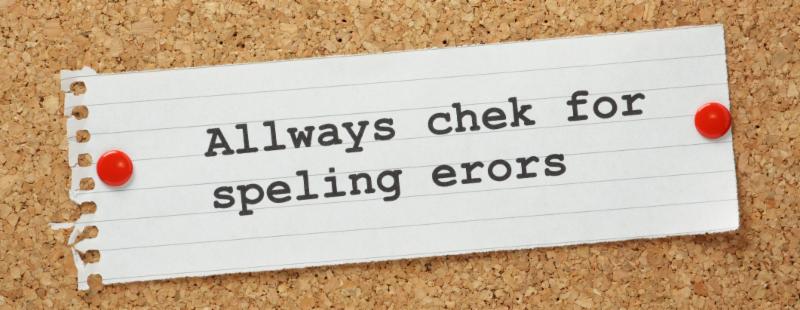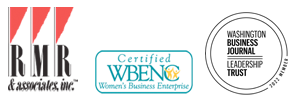
Embarrassing and sly, how do these typos somehow always get past our eye?
By Robyn Sachs, President and CEO of RMR & Associates
Ode to the Typographical Error…
’Till the forms are on the press, it is strange how still it keeps.
It shrinks down in a corner, and it never stirs or peeps –
That typographical error, too small for human eyes –
’Till the ink is on the paper, when it grows to mountain size.
The boss, he stares with horror, then he grabs his hair and groans;
The copyreader drops his head upon his hands and moans.
The remainder of the issue may be clean as clean can be,
But the typographical error is the only thing you see.
— Anonymous
In our proofreading experience at RMR, we have seen how your “mind’s eye” corrects typographical errors. With this amazing brain, we’ve found that the three most important proofreading tactics are to:
- Read aloud
- Proof changes on a document with a second person to confirm edits/ corrections have been made
- Always spellcheck and grammarcheck
Read on to learn RMR’s Official Proofreading System that has been very successful for over 25 years.
RMR’s Official Proofreading System
RMR’s extensive proofing policy is a rigorous check/double check system that was created to protect both our agency and clients from typographical errors. In Phil Crosby’s book Quality is Free, he talks about how quality control starts in the management office, not on the manufacturing line. From the initial creation stage to the final printing process of all client-related documents, RMR has instituted this quality control system. According to Crosby’s case studies in his book, companies who use quality control measures benefit from an increase of profits by an amount equal to 5-10% of sales. Time is money and typographical errors can cost you both if these steps are not followed precisely.
What to Proof
- Emails: Read and reread your emails before hitting send. Nothing is worse than sending an email to a client with a typo that lives forever in cyberspace!
- Proposals: This is the first official document your prospective client receives from your company. First impressions make the difference.
- Printed Documents: The cost to reprint a large scale marketing piece can be astronomical.
- Website Content: Imagine reading a website with errors. Would you buy from this company?
- Digital Advertising Campaigns: In today’s digital world, typos can go viral quickly. This can tarnish your reputation and cost you clients.
- Blogs: Written to be informative, blogs with typos can reduce your credibility.
- Social Media Posts: The second you post, your message is live for the world to see. While messages can be edited, your mistake could live on indefinitely.
- Company Communications: Press releases, case histories, award nominations, authored articles, white papers and client reports all represent your company. Hold your own company communications proofing standards to the same proofing level you hold client communications.
How to Proof
- Proofing means reading and comprehending every word of the document: headline, body, logos, contacts, and company boilerplates.
- Proof in a quiet area where you will not be disturbed or distracted. Two people proofing the same document simultaneously is preferred. One person reads from the edited document, another person “checks the edits off”.
- Proof grammar, punctuation, and spelling separately from content. The document should be read over separately for each proofing “filter”.
- Take extra caution, including proofing aloud for key documents, such as awards, releases, authored articles, case studies and other “sensitive” documents meant for external distribution.
- All documents must be SPELLING AND GRAMMAR CHECKED. The Spellchecker feature on your computer does not catch “content errors”. Always proof for content and context.
- Proof from the latest copy of the document against the previous versions.
- All materials being sent to a client must be proofed by at least two people.
- Forward the company-approved copy to the client to obtain approvals. Remember to document/date all client email and verbal approvals. Do NOT distribute externally until approved by the client.
- Obtain approval from any third parties for any titles, quotes or company information.
- Send final version to client and the team and save it in the system as “FINAL” along with the date.
About RMR…
Headquartered in Rockville, MD, RMR & Associates, Inc. (RMR), has been addressing the unique needs of clients serving commercial, B2B, government and IT sectors for over 25 years. RMR’s integrated marketing includes public relations, social media, advertising, direct mail, media buying, list rental, website design and interactive marketing. RMR’s unique, national experience and knowledge base has helped to build an extensive network of key contacts among venture capitalists, key organizations and key business leaders. With more than 500 product and company rollouts and repositionings, RMR has garnered results for local, national and international clients. Robyn Sachs, President, can be reached at rsachs@rmr.com.
